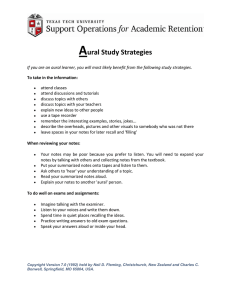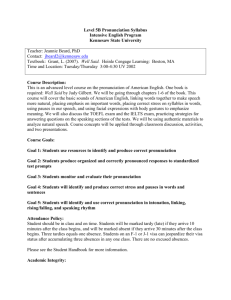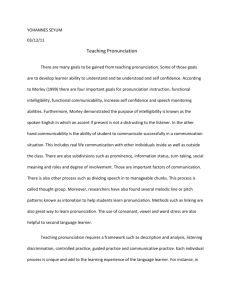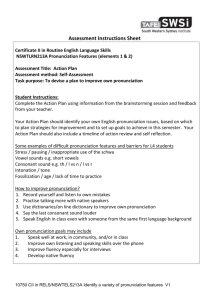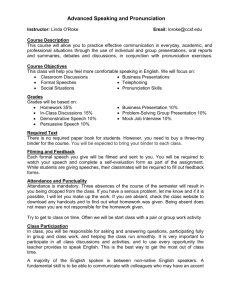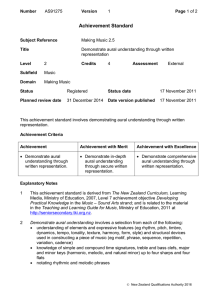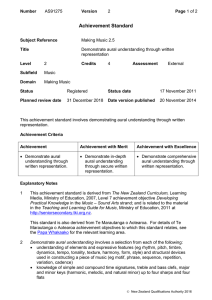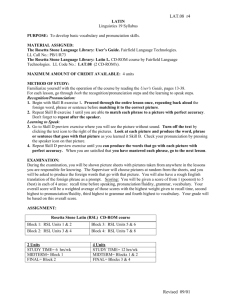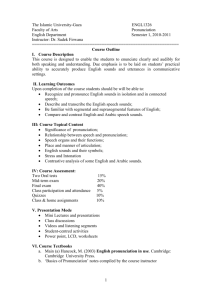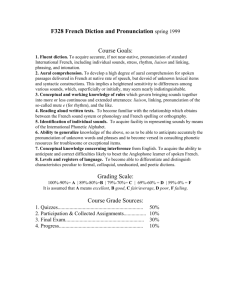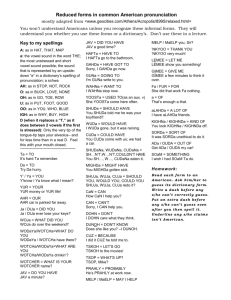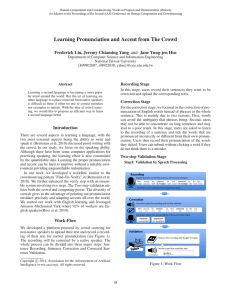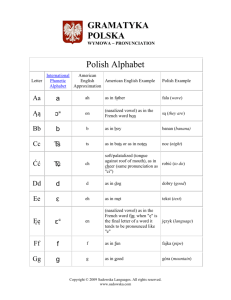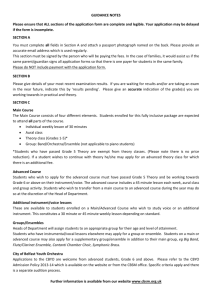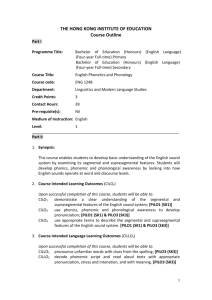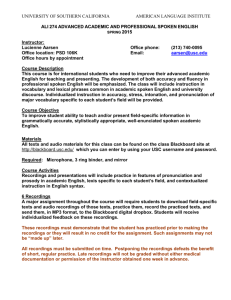Using visual feedback to improve L2 pronunciation in ESP courses
advertisement
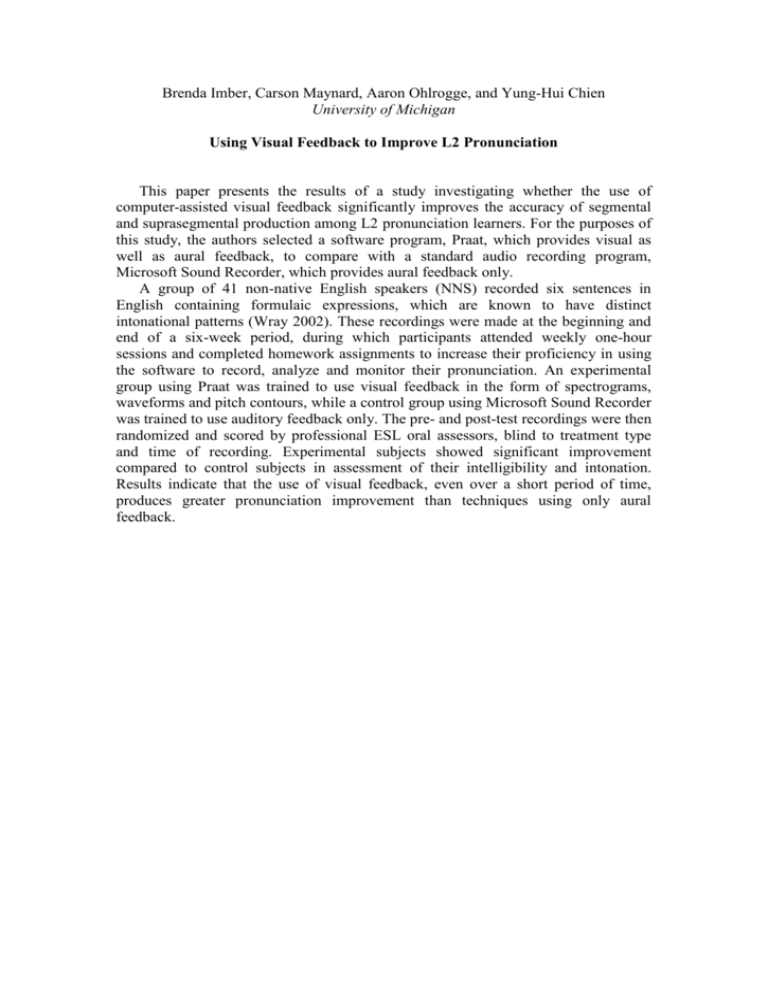
Brenda Imber, Carson Maynard, Aaron Ohlrogge, and Yung-Hui Chien University of Michigan Using Visual Feedback to Improve L2 Pronunciation This paper presents the results of a study investigating whether the use of computer-assisted visual feedback significantly improves the accuracy of segmental and suprasegmental production among L2 pronunciation learners. For the purposes of this study, the authors selected a software program, Praat, which provides visual as well as aural feedback, to compare with a standard audio recording program, Microsoft Sound Recorder, which provides aural feedback only. A group of 41 non-native English speakers (NNS) recorded six sentences in English containing formulaic expressions, which are known to have distinct intonational patterns (Wray 2002). These recordings were made at the beginning and end of a six-week period, during which participants attended weekly one-hour sessions and completed homework assignments to increase their proficiency in using the software to record, analyze and monitor their pronunciation. An experimental group using Praat was trained to use visual feedback in the form of spectrograms, waveforms and pitch contours, while a control group using Microsoft Sound Recorder was trained to use auditory feedback only. The pre- and post-test recordings were then randomized and scored by professional ESL oral assessors, blind to treatment type and time of recording. Experimental subjects showed significant improvement compared to control subjects in assessment of their intelligibility and intonation. Results indicate that the use of visual feedback, even over a short period of time, produces greater pronunciation improvement than techniques using only aural feedback.

